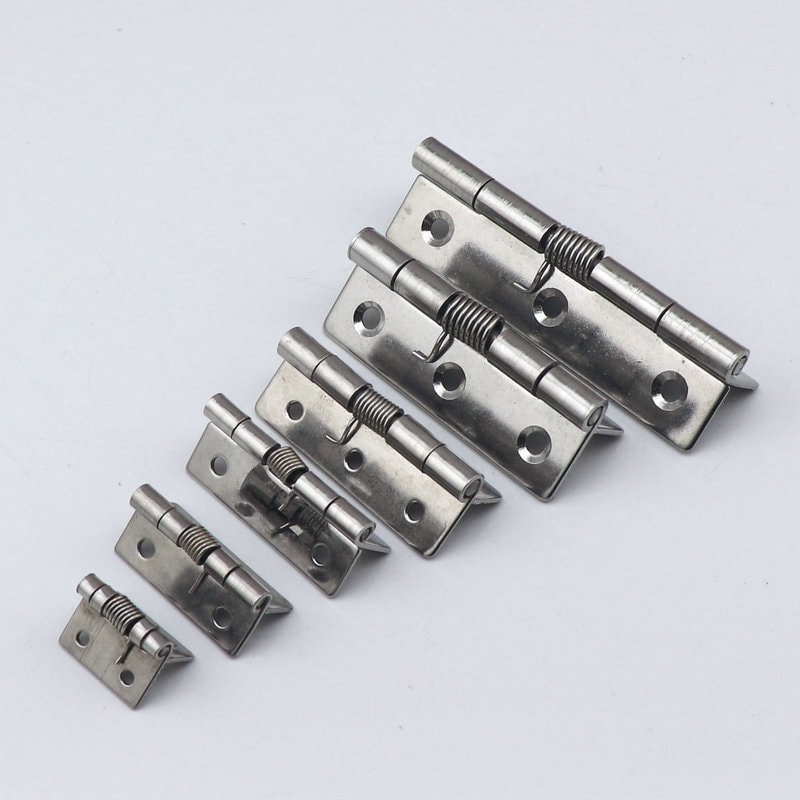When envisioning hinge design, most may trivialize its complexity, picturing a mere tool for doors or cabinets. Yet, when assessed through the lens of engineering, hinges become intricate marvels, harmonizing a plethora of principles to execute precise movement and robust support.
Hinges, fundamentally, are designed to facilitate rotational movement. Their sophistication lies in harmonizing mechanics, materials science, kinematics, and even thermodynamics to yield optimal performance. Ensuring durability, accommodating different loads, and providing consistent rotational functionality are all achieved through strategic engineering considerations.
Dive deep as we unravel the core engineering principles that underpin hinge design, enabling them to be the silent yet invaluable components in countless mechanisms.

How Do Materials Influence Hinge Performance?
The choice of material significantly dictates hinge performance. For industrial settings, materials like stainless steel, brass, or titanium are preferred due to their high tensile strength and durability. Furthermore, different materials have distinct coefficients of friction which influence hinge movement.
Moreover, materials undergo surface treatments to enhance inherent properties, making hinges resilient against corrosion, wear, and environmental stresses. The compatibility of the hinge material with its operating environment ensures longevity and consistent performance.
What Role Does Mechanics Play in Hinge Design?
Mechanics, particularly statics and dynamics, provide foundational understanding in hinge design. While statics deals with forces in equilibrium, ensuring hinges withstand loads without deformation, dynamics concerns motion, ascertaining smooth hinge operation under various conditions.
By balancing forces and moments acting on the hinge, engineers ensure it performs efficiently under load without succumbing to mechanical failures. The careful consideration of torque, frictional forces, and potential stresses are integral to this process.

How is Kinematics Incorporated into Hinge Functionality?
Kinematics focuses on motion without considering forces. In hinge design, this translates to ensuring smooth and intended motion around the pivot. The arc of movement, speed, and directionality are all facets of kinematic considerations.
Engineers evaluate hinge joint movement trajectories, ensuring there’s no undesired lateral or vertical movement. Any anomalies can indicate alignment issues, wear, or defects in the design or assembly, emphasizing the kinematic accuracy’s importance.
Why are Bearings Integral to Hinge Designs?
Bearings reduce friction between moving parts, promoting smoother hinge operation. Different types, such as ball or roller bearings, cater to distinct operational demands like radial or axial loads.
Their incorporation into hinge designs ensures reduced wear, necessitating less frequent maintenance. Bearings’ proper selection and positioning can significantly enhance hinge performance, especially in high-frequency use scenarios.

How Do Thermodynamic Principles Affect Hinge Functionality?
While seemingly unrelated, thermodynamics plays a role, especially concerning materials. Metals expand and contract with temperature variations, affecting hinge fit, operation, and even causing potential failures in extreme conditions.
Engineers anticipate these thermal fluctuations, opting for materials with lower coefficients of thermal expansion or designing hinges with tolerances to account for such expansions and contractions, ensuring consistent functionality across varied temperatures.
What’s the Significance of Load-Bearing Capacity in Hinge Design?
A hinge’s load-bearing capacity is paramount. By understanding the weight and forces a hinge needs to support, engineers tailor designs to evenly distribute stress, preventing deformation or failure.
Load distribution relies on hinge dimensions, placement, and material. Through rigorous testing, engineers validate a hinge’s capability to handle stipulated weights while maintaining its operational integrity.

How Does Geometric Design Influence Hinge Performance?
Beyond materials and mechanics, geometric considerations—like the hinge’s shape, size, and pivot point location—significantly affect performance. A hinge’s geometry directly relates to its range of motion, strength, and the stresses it encounters during operation.
Optimized geometric design ensures efficient force distribution, minimizes undesired stresses, and enhances overall hinge durability and functionality.
How Do Hinges Counteract Wear and Tear?
Every mechanical component, hinges included, undergoes wear over time. Engineering solutions like selecting wear-resistant materials, incorporating self-lubricating properties, or applying protective coatings counteract this inevitability.
Furthermore, designs often simplify regular maintenance, whether that’s providing easy access points for lubrication or facilitating component replacements. These strategies prolong a hinge’s operational lifespan.

How are Hinges Adapted for Specialized Industrial Applications?
Beyond general design, hinges can be tailored for specific industrial applications. For instance, a hinge used in aerospace might prioritize weight minimization, while one in marine environments emphasizes corrosion resistance.
Recognizing the unique challenges of different industries, hinge designs incorporate specialized materials, coatings, or structural modifications to meet the precise demands of their intended application.
Conclusion
The engineering intricacies of hinge design underscore the significance of seemingly commonplace components. Each hinge, tailored by blending myriad engineering principles, serves as a testament to human ingenuity, effortlessly performing its function while withstanding the tests of time and environment.
You might also be interested:




